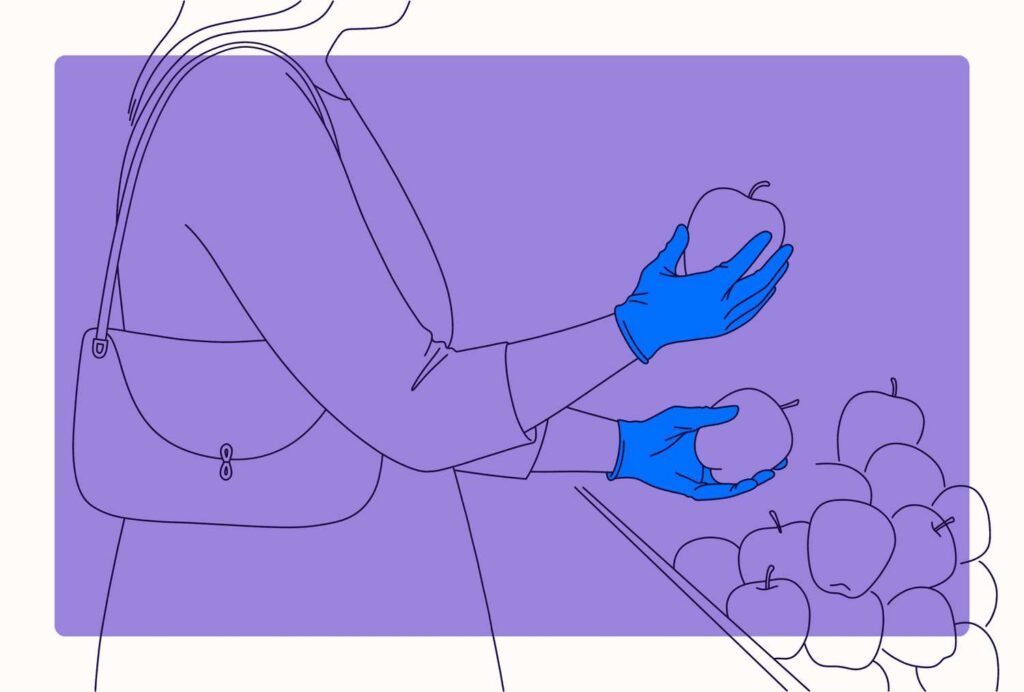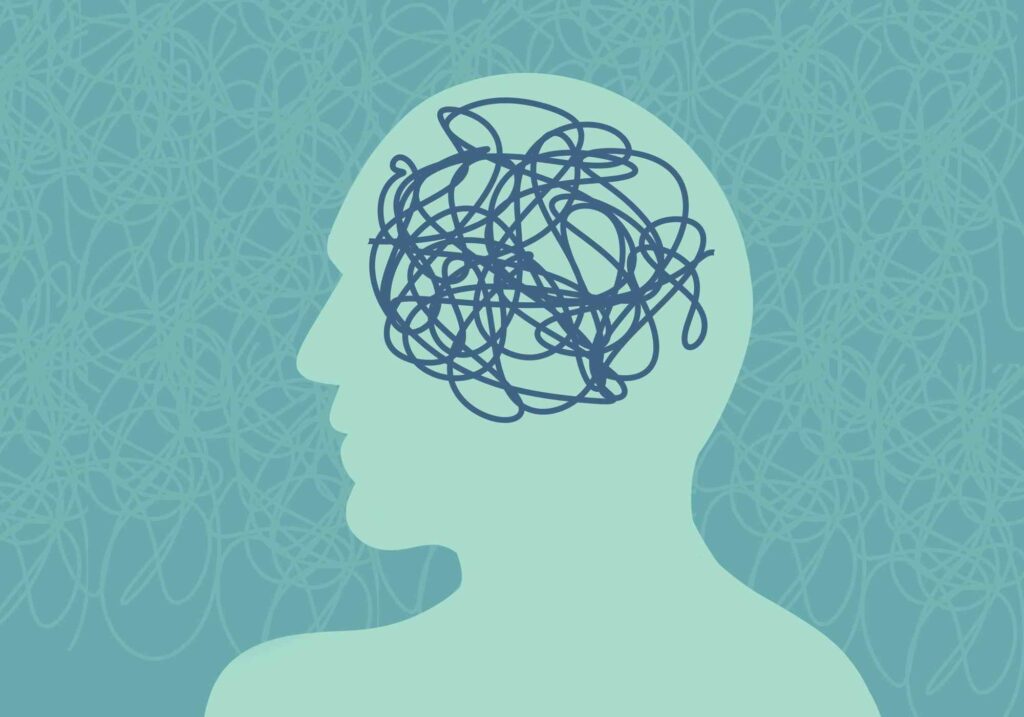Cognitive Errors in OCD

Obsessive-Compulsive Disorder (OCD) is a mental health condition characterized by intrusive thoughts (obsessions) and repetitive behaviors or mental acts (compulsions). These symptoms can be distressing, time-consuming, and interfere significantly with a person’s daily functioning. While OCD is commonly understood in terms of its behavioral manifestations, the cognitive dimension is equally critical. Specifically, “cognitive errors in OCD” play a pivotal role in the maintenance and exacerbation of the disorder. Understanding these cognitive distortions is essential for effective treatment, especially within cognitive-behavioral therapy (CBT).
Cognitive errors, also known as cognitive distortions, refer to the irrational or biased ways of thinking that are often automatic and unconscious. In individuals with OCD, these errors can contribute to the persistence of obsessive thoughts and compulsive behaviors. This article explores the cognitive errors in OCD from both psychological and cognitive perspectives, offering insights into how these distorted thought patterns fuel the disorder and how they can be addressed therapeutically.
Cognitive Errors: An Overview

Cognitive errors in OCD are systematic patterns of thought that skew an individual’s perception of reality, often leading to irrational conclusions and maladaptive behaviors. Aaron Beck, the founder of cognitive therapy, first introduced the concept of cognitive distortions, emphasizing how these thought patterns can maintain various mental health conditions, including OCD.
The most common cognitive errors in OCD include overestimation of threat, inflated responsibility, thought-action fusion, perfectionism, intolerance of uncertainty, and magical thinking. Each of these errors contributes to the obsessive-compulsive cycle by reinforcing the individual’s belief that their obsessions are valid and that their compulsions are necessary to prevent harm or distress.
Psychological Perspective on Cognitive Errors in OCD

From a psychological perspective, cognitive errors in OCD are closely linked to the individual’s underlying beliefs and core schemas. These core schemas are deep-seated beliefs about the self, others, and the world, often developed early in life. In OCD, these schemas are typically rigid, negative, and fear-based, leading to the development of cognitive distortions that perpetuate the disorder.
- Overestimation of Threat
One of the most common cognitive errors in OCD is the overestimation of threat. Individuals with OCD tend to believe that the likelihood of harm or danger is much higher than it actually is. This distortion often leads to excessive worry and the need for compulsive behaviors to mitigate perceived risks. For example, someone with contamination-related OCD may believe that touching a doorknob will inevitably lead to severe illness, even though the actual risk is minimal.
- Inflated Responsibility
Inflated responsibility is another cognitive error in OCD that involves the belief that one has a significant and often unrealistic level of control over preventing harm to oneself or others. This can lead to compulsive behaviors aimed at preventing disastrous outcomes, even if such outcomes are highly improbable. For instance, an individual may feel responsible for preventing a house fire and, therefore, repeatedly check the stove, believing that if they do not perform this ritual, catastrophe will occur.
- Thought-Action Fusion
Thought-action fusion is a cognitive error in OCD that occurs when an individual believes that having a thought about a negative event is equivalent to the event actually happening. This cognitive distortion blurs the line between thought and reality, leading to intense distress over intrusive thoughts. For example, a person with OCD may believe that simply thinking about harming a loved one makes them capable of committing the act, even though they have no intention of doing so.
- Perfectionism
Perfectionism is another common cognitive error in OCD, characterized by the belief that there is a “right” way to think or act, and anything less than perfect is unacceptable. This can lead to compulsions aimed at achieving perfection or preventing mistakes. For instance, a person may spend hours organizing objects in a precise order, believing that any deviation from this order will lead to negative consequences.
- Intolerance of Uncertainty
Intolerance of uncertainty is a cognitive error in OCD that involves an inability to tolerate doubt or ambiguity. Individuals with OCD often feel a strong need for certainty and control, leading to compulsive behaviors designed to eliminate any uncertainty. For example, someone may repeatedly seek reassurance that they have locked the door, as the uncertainty about whether it is truly locked becomes intolerable.
- Magical Thinking
Magical thinking is a cognitive error in OCD where an individual believes that their thoughts, actions, or rituals can influence unrelated events in a supernatural or irrational way. This cognitive distortion often leads to compulsive behaviors aimed at preventing negative outcomes. For example, a person may believe that if they do not perform a specific ritual, something terrible will happen to a loved one, even though there is no logical connection between the ritual and the outcome.
Cognitive Perspective on Cognitive Errors in OCD

From a cognitive perspective, cognitive errors in OCD are understood as maladaptive thought patterns that result from dysfunctional information processing. The cognitive model of OCD suggests that individuals with the disorder misinterpret their intrusive thoughts as being highly significant, leading to anxiety and the need for compulsive behaviors to neutralize the perceived threat.
- Biased Information Processing
Cognitive errors in OCD can be viewed as products of biased information processing, where individuals selectively focus on threatening information while ignoring or minimizing evidence to the contrary. This selective attention reinforces the belief that the world is dangerous and that their obsessive thoughts are valid, further entrenching the obsessive-compulsive cycle.
- Cognitive Fusion
Cognitive fusion, a concept from Acceptance and Commitment Therapy (ACT), refers to the tendency to become entangled with one’s thoughts, treating them as literal truths rather than mental events. In OCD, cognitive fusion is closely related to cognitive errors, as individuals fuse with their distorted thoughts, leading to compulsive behaviors aimed at reducing the distress associated with these thoughts. For example, a person may fuse with the thought, “If I don’t wash my hands, I will get sick,” leading to compulsive handwashing.
- Metacognitive Beliefs
Metacognitive beliefs, or beliefs about thinking, play a critical role in the cognitive perspective on cognitive errors in OCD. Individuals with OCD often hold maladaptive metacognitive beliefs, such as the belief that having an intrusive thought is dangerous or that they must control their thoughts at all costs. These beliefs contribute to cognitive errors in OCD by reinforcing the idea that thoughts are powerful and must be neutralized through compulsive behaviors.
- Cognitive Rigidity
Cognitive rigidity, or the inability to adapt one’s thinking in response to new information, is another cognitive factor that contributes to cognitive errors in OCD. Individuals with OCD often struggle to update their beliefs in the face of contradictory evidence, leading to the persistence of distorted thinking. For example, even if a person repeatedly checks the door and confirms that it is locked, they may still feel compelled to check again due to their rigid belief that it could still be unlocked.
Treatment Implications: Addressing Cognitive Errors in OCD

Understanding cognitive errors in OCD is crucial for effective treatment. Cognitive-behavioral therapy (CBT), particularly Exposure and Response Prevention (ERP), is the gold standard treatment for OCD and directly targets these cognitive distortions. ERP involves exposing individuals to their feared situations without allowing them to engage in compulsive behaviors, thereby challenging their cognitive errors and helping them develop more adaptive ways of thinking.
- Cognitive Restructuring
Cognitive restructuring is a core component of CBT that involves identifying and challenging cognitive errors in OCD. Therapists work with individuals to examine the evidence for and against their distorted beliefs, helping them to develop more realistic and balanced ways of thinking. For example, a person with contamination fears may be encouraged to consider the actual likelihood of getting sick from touching a doorknob, rather than overestimating the threat.
- Mindfulness and Acceptance
Mindfulness and acceptance-based approaches, such as Acceptance and Commitment Therapy (ACT), are also effective in addressing cognitive errors in OCD. These approaches focus on helping individuals develop a non-judgmental awareness of their thoughts and learn to accept them as mental events rather than literal truths. By defusing from their cognitive errors, individuals with OCD can reduce the power of their obsessions and resist the urge to engage in compulsive behaviors.
- Metacognitive Therapy
Metacognitive therapy is another approach that targets cognitive errors in OCD by addressing maladaptive metacognitive beliefs. This therapy focuses on helping individuals change their beliefs about the importance and controllability of their thoughts, thereby reducing the need for compulsive behaviors. For example, a person may be encouraged to recognize that having an intrusive thought does not make it true and that trying to control their thoughts is unnecessary and counterproductive.
- Behavioral Experiments
Behavioral experiments are another CBT technique that can be used to challenge cognitive errors in OCD. These experiments involve testing the validity of distorted beliefs through real-life situations. For example, an individual with OCD who believes that they must check the stove multiple times to prevent a fire may be encouraged to leave the house without checking and observe that no fire occurs. By testing their cognitive errors in this way, individuals can gradually learn to tolerate uncertainty and reduce their compulsive behaviors.
Conclusion
Cognitive errors in OCD are fundamental to the development and maintenance of the disorder. These distorted thought patterns, such as overestimation of threat, inflated responsibility, and thought-action fusion, contribute to the obsessive-compulsive cycle by reinforcing the individual’s fears and driving compulsive behaviors. From both psychological and cognitive perspectives, these cognitive distortions are seen as products of underlying beliefs, biased information processing, and maladaptive metacognitive beliefs.
Effective treatment for OCD, particularly cognitive-behavioral therapy, focuses on challenging and restructuring these cognitive errors. By addressing the distorted thinking that underlies OCD, individuals can break free from the obsessive-compulsive cycle and develop healthier ways of thinking. Whether through cognitive restructuring, mindfulness, or behavioral experiments, targeting cognitive errors in OCD is essential for helping individuals manage their symptoms and regain control over their lives.
In conclusion, understanding and addressing cognitive errors in OCD is crucial for both clinicians and individuals suffering from the disorder. These cognitive distortions are not only a symptom of OCD but also a driving force behind its persistence. By recognizing and challenging these cognitive errors, individuals can begin to dismantle the obsessive-compulsive cycle and work toward lasting recovery.
